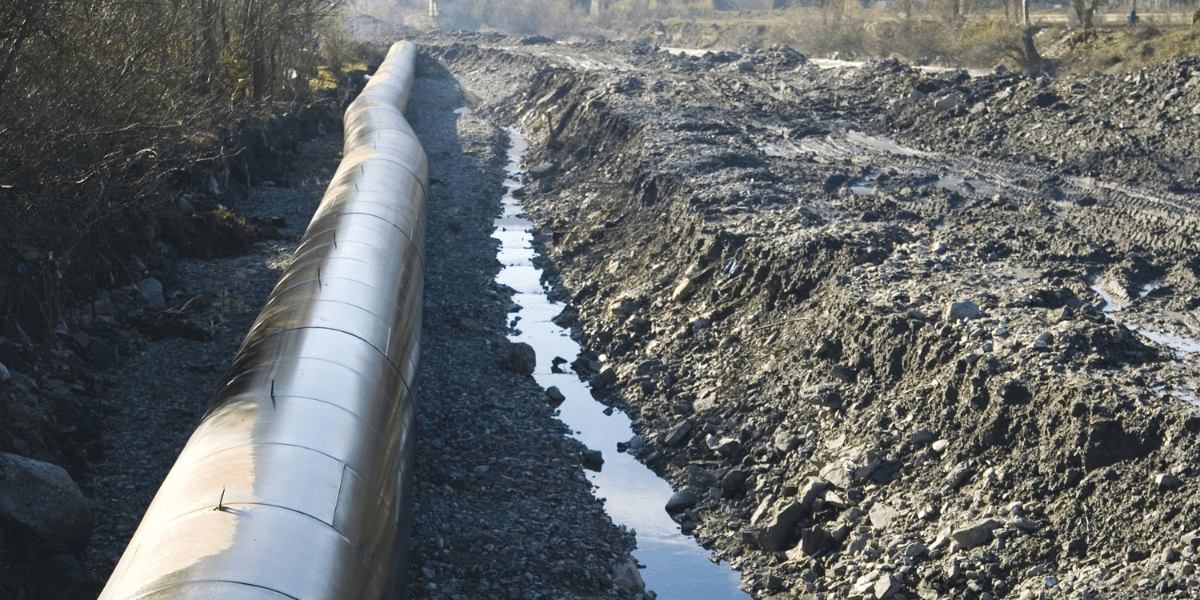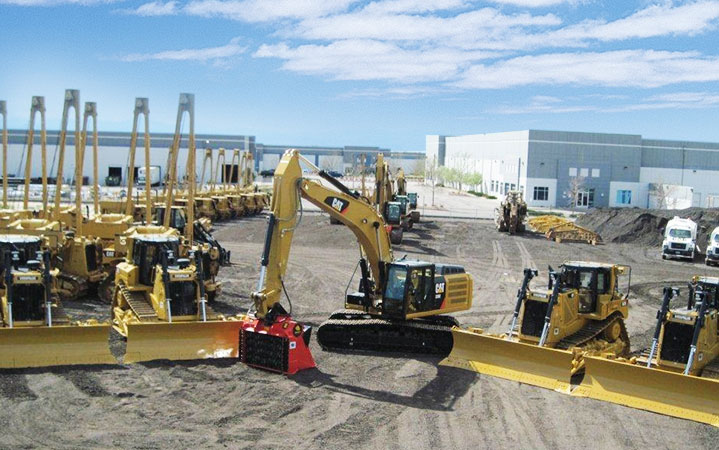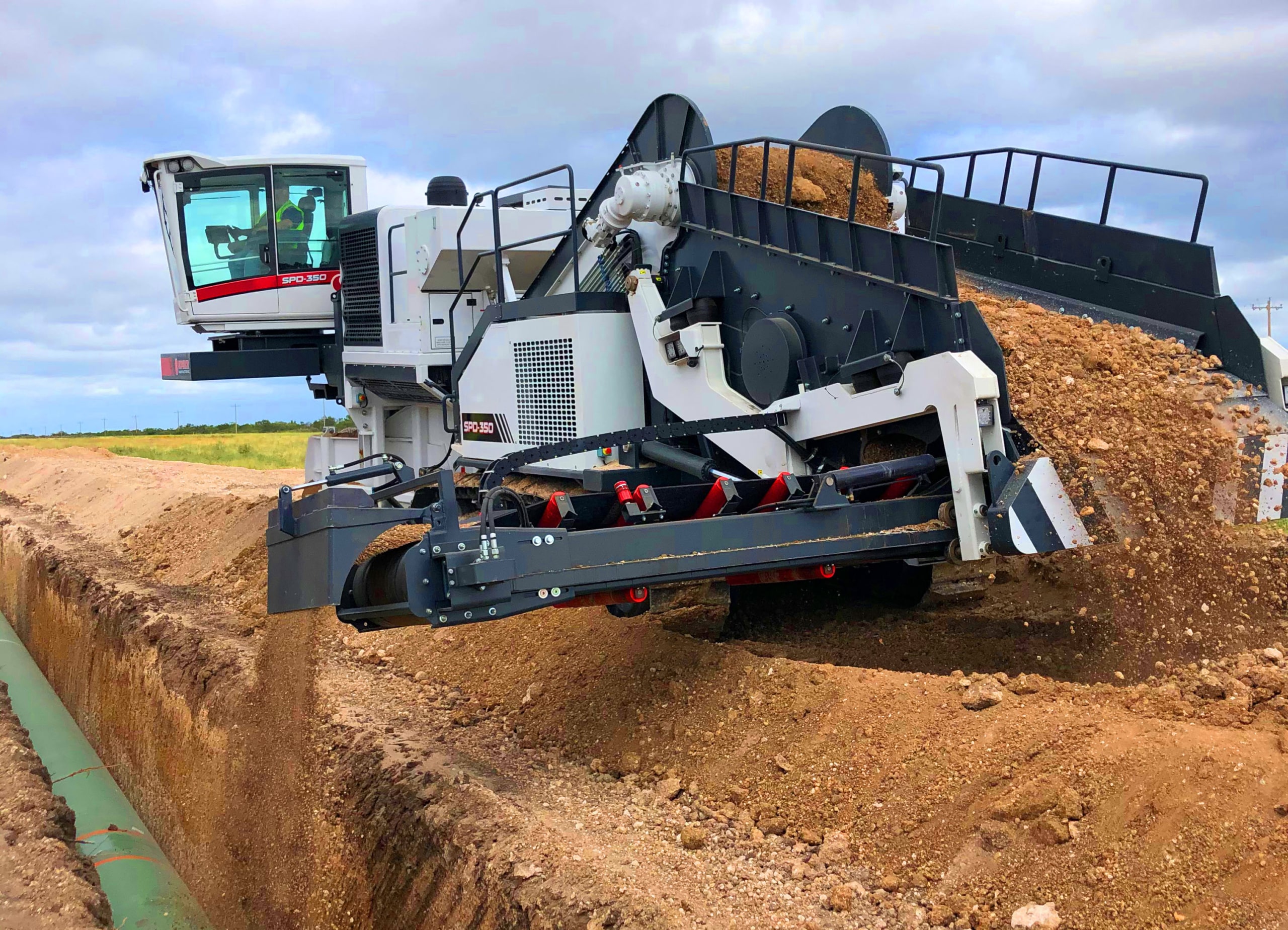Everything you should know about Superior Rentals reviews: ratings explained
A Comprehensive Guide to the Various Kinds of Oil Field Equipment and Pipeline Equipment Available
The oil and gas market depends greatly on specific equipment for efficient extraction and transport. Different sorts of machinery, from drilling rigs to tank, play crucial duties in this intricate procedure. Each item of tools offers distinctive features that add to total functional success. Recognizing these elements is important for any individual associated with the market. As the sector evolves, so as well do the innovations that sustain it. What innovations are on the perspective?

Drilling Rigs: The Foundation of Oil Exploration
Drilling rigs function as the crucial equipment in the domain of oil exploration, making it possible for business to accessibility hydrocarbon books hidden deep below the Planet's surface area. These rigs are available in various types, consisting of land rigs, offshore rigs, and mobile systems, each created to run in certain settings. Furnished with advanced technology, piercing rigs can pass through geological formations with precision, making certain efficient resource removal. The architectural integrity and functional capabilities of these rigs are crucial, as they need to withstand severe problems and significant stress. The option of a boring gear influences the total task cost and timeline, making it an important consideration for oil companies seeking to maximize their exploration efforts and take full advantage of performance in their procedures.
Pumps: Important for Fluid Motion
In the oil extraction procedure, the duty of pumps is substantial, helping with the motion of fluids throughout different phases of production. Pumps are necessary for transferring unrefined oil, water, and various other fluids from below ground storage tanks to the surface area and afterwards via pipelines to refineries. They can be found in various types, including centrifugal, favorable variation, and completely submersible pumps, each offering specific functions based on the fluid characteristics and functional requirements. Centrifugal pumps are typically made use of for their performance in high-flow applications, while positive variation pumps stand out in dealing with thick liquids. The choice of pump influences total effectiveness, functional safety and security, and maintenance expenses. Proper selection and upkeep of pumps are vital for maximizing production and decreasing downtime in oil field procedures.
Valves: Managing Flow and Pressure

Shutoffs play an essential function in handling the circulation and pressure of fluids within oil fields and pipes. Numerous kinds of valves serve unique applications, each made to satisfy details functions fundamental for reliable procedure - Superior Oilfield Rentals. Understanding the features and usages of these valves is necessary for maximizing system efficiency and safety
Sorts of Valves
Vital parts in oil area procedures, valves play a vital function in regulating the circulation and pressure of fluids within pipelines and devices. Different kinds of valves are utilized to meet the varied demands of oil and gas manufacturing. Usual kinds include entrance shutoffs, which supply a straight-line circulation and very little stress drop; globe valves, understood for their throttling abilities; and round shutoffs, recognized for their quick on/off control. Additionally, check shutoffs protect against backflow, while butterfly shutoffs use a light-weight solution for regulating flow. Each valve type is made with certain products and arrangements to endure the harsh problems often found in oil areas, making certain integrity and performance in procedures. Understanding these kinds is critical for reliable system monitoring.
Valve Applications and Functions
While numerous sorts of valves serve distinct functions, their primary applications revolve around regulating flow and pressure within oil and gas systems. Valves such as gate, globe, and ball shutoffs control liquid activity, ensuring peak performance and safety. Gateway shutoffs are typically utilized for on/off control, offering very little flow resistance. Globe shutoffs, on the other hand, deal accurate flow regulation, making them appropriate for throttling applications. Sphere shutoffs are favored for their quick procedure and tight securing abilities. On top of that, stress relief shutoffs are essential for preventing system overpressure, guarding devices honesty. In general, the appropriate choice and application of valves boost operational performance, ensuring the dependable transportation of oil and gas with pipes and handling centers.
Compressors: Enhancing Gas Transport
Compressors play a vital duty in the reliable transportation of natural gas, guaranteeing that it relocates efficiently via pipes over fars away. These devices enhance the pressure of gas, enabling it to overcome friction and elevation modifications within the pipeline system. Furthermore, compressors promote the harmonizing of supply and need, suiting fluctuations in consumption and production rates. Various types of compressors are utilized in the market, including centrifugal, reciprocating, and rotary screw compressors, each offering unique advantages based on the operational requirements. Routine maintenance of these compressors is vital to maximize effectiveness and reduce downtime, eventually adding to a trustworthy gas transportation network. Their important feature click here highlights the value of compressors in the general oil and gas framework.
Storage Tanks: Safe and Effective Fluid Management
Efficient transport of natural gas relies upon different support group, one of which is the proper monitoring of storage space containers. These tanks play a crucial function in safely including fluids, guaranteeing that functional performance is kept while decreasing environmental risks. Created from durable materials, they are designed to hold up against high stress and corrosive aspects. Correctly sized and strategically located, storage containers facilitate the smooth circulation of gas and other fluids, preventing traffic jams in supply chains. Routine maintenance and surveillance are necessary to find leaks or architectural issues, advertising safety and conformity with regulative standards. Inevitably, the reliable management of tank is essential for the general honesty and reliability of the oil and gas industry's liquid handling systems.
Pipeline Systems: Facilities for Transport
Pipeline systems work as the backbone of the oil and gas sector, assisting in the efficient transportation of hydrocarbons over substantial ranges. These systems include different parts, consisting of pipes, valves, pumps, and compressors, all thoroughly designed to ensure smooth circulation. The products used in pipeline building, commonly steel or high-density polyethylene, are chosen for durability and resistance to rust. Pipeline networks can span throughout land and water, attaching manufacturing websites to refineries and distribution. Furthermore, advanced technology allows real-time surveillance of circulation rates and pressure levels, improving operational effectiveness. The critical positioning of these pipes lessens ecological effect while taking full advantage of resource access, thereby playing an important role in meeting power needs worldwide.
Safety Equipment: Ensuring Worker and Environmental Protection
The operation of pipeline systems, while crucial for power transportation, also presents significant safety challenges for workers and the environment. Safety devices plays a considerable function in alleviating these threats. Individual safety tools (PPE) such as headgears, handwear covers, and non-slip shoes safeguards workers from physical dangers. Furthermore, gas discovery systems monitor for leaks, ensuring that unsafe materials do not posture a threat to employees or the bordering ecological community. Emergency situation shutdown systems are critical for promptly halting procedures during a dilemma, stopping possible disasters. Spill control materials, consisting of absorbents and obstacles, are essential for decreasing environmental impact. On the whole, investing in comprehensive safety devices is crucial for keeping operational honesty and securing both workers and the setting in the oil and gas market.

Frequently Asked Questions
How Do I Choose the Right Oil Field Equipment for My Task?
Picking the appropriate oil area equipment involves evaluating task requirements, budget plan restrictions, and operational requirements. Consider elements such as equipment reliability, compatibility with existing systems, and the vendor's online reputation to assure peak efficiency and safety.
What Are the Maintenance Requirements for Oil Field Equipment?
Maintenance demands for oil field tools include regular evaluations, lubrication, and prompt fixings. Operators ought to also abide by maker guidelines, screen performance metrics, and warranty compliance with safety policies to improve longevity and efficiency.

How Can I Make Sure Compliance With Environmental Rules?
To guarantee conformity with ecological guidelines, firms need to conduct routine audits, apply ideal practices, spend in training, keep proper documents, and remain upgraded on legislation (Superior Rentals near me). Cooperation with ecological agencies can additionally improve adherence to policies
What Is the Ordinary Life Expectancy of Pipeline Equipment?
The typical lifespan of pipeline tools typically varies from 20 to half a century, depending upon elements such as worldly top quality, ecological conditions, and upkeep methods. Routine examinations can significantly affect long life and operational efficiency.
Just how Do I Safely Transport Oil Field Equipment to Remote Locations?
Transporting oil area equipment to remote areas needs careful preparation, including route evaluation, securing authorizations, making use of suitable vehicles, and making sure security methods are complied with. Proper training and interaction among crews are important for effective transport.